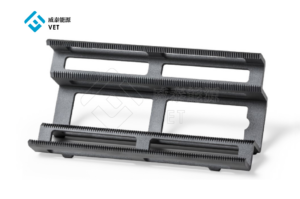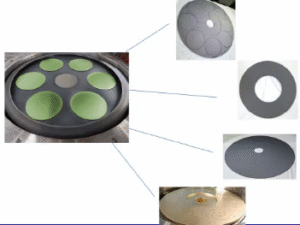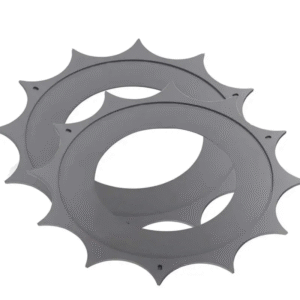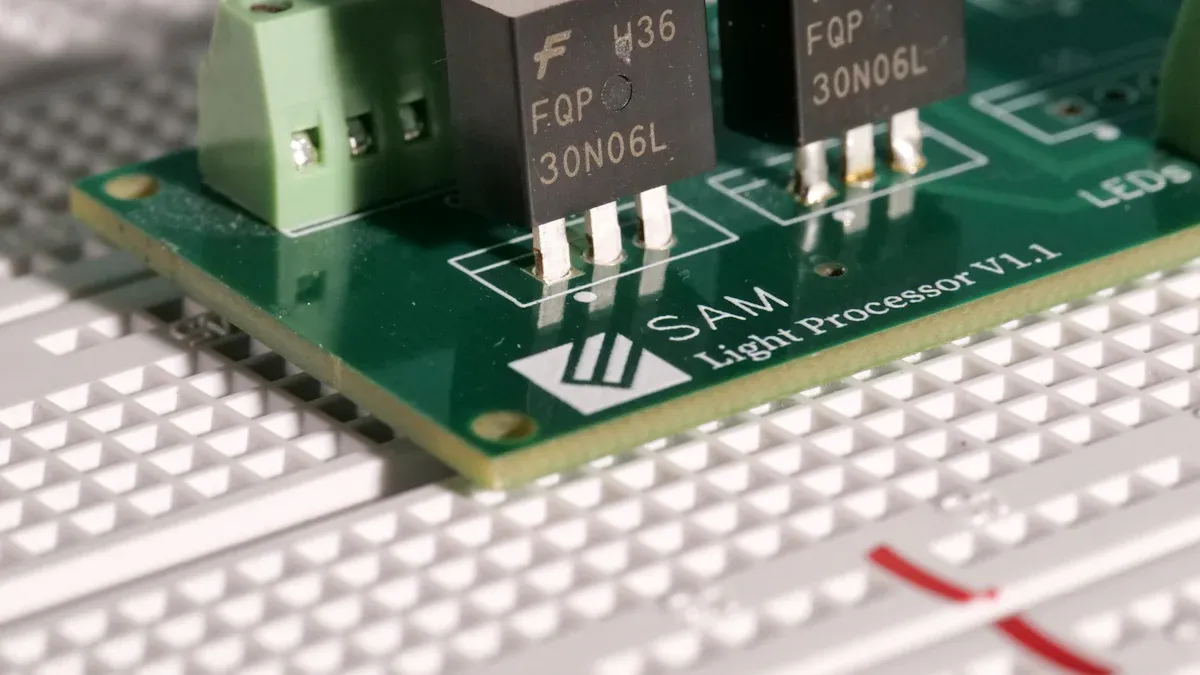
Graphite Susceptor and EPI Susceptor are essential components in semiconductor manufacturing, serving as key elements in ensuring process efficiency and enhancing product quality. The selection of the appropriate wafer carrier is crucial to achieving optimal results. Industry data underscores this significance:
- The wafer processing market, which was valued at $8.5 billion in 2021, is anticipated to grow to $14.4 billion by 2031.
- Factors such as thermal performance, material compatibility, and cost-effectiveness continue to be vital considerations in the decision-making process.
Key Takeaways
- Graphite susceptors are affordable and useful. They work well for many semiconductor processes needing high heat stability.
- EPI susceptors are great for epitaxial growth. They offer even heat and resist chemicals, improving material quality and lowering defects.
- Picking the right wafer carrier means checking heat performance, cost, and process needs to get the best results in making semiconductors.
Wafer Carriers in Semiconductor Manufacturing
Definition and Function
Wafer carriers are specialized tools designed to hold, transport, and protect semiconductor wafers during manufacturing processes. These carriers ensure wafers remain stable and secure, minimizing contamination and physical damage. Their design often incorporates features like electrostatic discharge (ESD) protection and vibration dampening to maintain wafer integrity.
Importance in Semiconductor Processes
Wafer carriers play a critical role in maintaining operational efficiency and product quality. As semiconductor manufacturing evolves, carriers have transitioned from basic storage solutions to advanced logistical tools compatible with automated systems. Innovations such as smart carriers enhance integration within automated workflows, reflecting the industry’s focus on improving productivity.
Industry case studies highlight their functional importance:
| Case Study | Description |
|---|---|
| Wafer Clamp Rings | Provide dimensional stability for precise processing, ensuring high yield. |
| CMP Retaining Rings | Facilitate uniform material removal during polishing, reducing defects. |
Types of Wafer Carriers
The semiconductor industry offers a diverse range of wafer carriers tailored to specific applications:
- By Application: Includes carriers for 300mm wafers, 200mm wafers, and others.
- By Type: Differentiates between in-process carriers used during fabrication and shipment carriers for transportation.
- Key Features: Polymer-based or metal-based designs with ESD protection, vibration dampening, and size compatibility.
These innovations demonstrate the industry’s commitment to enhancing wafer protection and process efficiency.
Graphite Susceptor
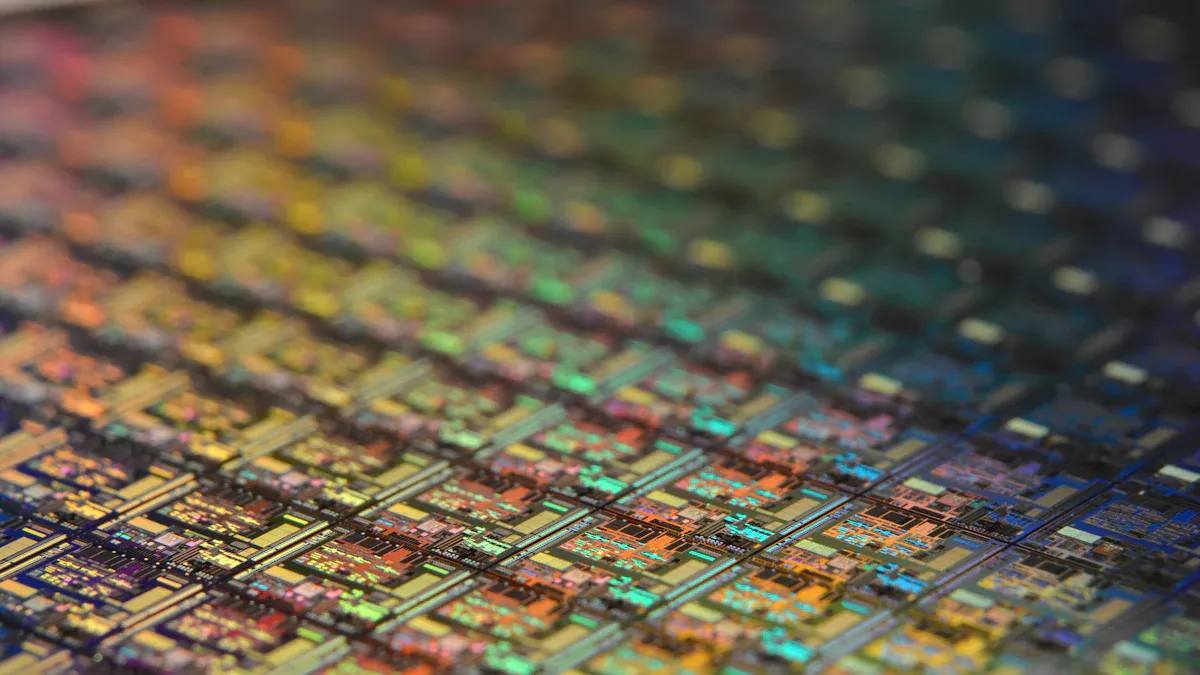
Key Properties
Graphite susceptors are engineered from high-purity graphite, making them ideal for semiconductor manufacturing. Their unique properties include exceptional thermal conductivity, high-temperature resistance, and chemical stability. These characteristics allow them to perform reliably in extreme environments, such as epitaxial growth chambers.
The semiconductor industry heavily relies on high-purity graphite due to its ability to maintain contamination-free environments. For instance:
- The sector is the largest consumer of high-purity graphite, driven by advancements in AI, 5G, and electronics.
- A single 300mm silicon wafer production line may require over 1,000 graphite components to ensure process integrity.
Additionally, graphite susceptors often meet SEMI F47 certification standards, ensuring they can withstand voltage sag conditions critical for wafer fabrication. This compliance is essential for companies like Applied Materials and ASML, which demand high-quality graphite components for their equipment.
Advantages
Graphite susceptors offer several advantages that make them indispensable in semiconductor processes:
- Thermal Efficiency: Their excellent thermal conductivity ensures uniform heat distribution, which is crucial for processes like epitaxial growth.
- Durability: High-purity graphite resists wear and tear, even under prolonged exposure to high temperatures and reactive gases.
- Cost-Effectiveness: Despite their advanced properties, graphite susceptors are relatively cost-efficient compared to alternative materials.
- Process Compatibility: They are compatible with a wide range of semiconductor processes, including chemical vapor deposition (CVD) and molecular beam epitaxy (MBE).
These benefits contribute to improved wafer processing outcomes, reducing defects and enhancing yield rates.
Disadvantages
While graphite susceptors excel in many areas, they may require careful handling to maintain their performance. Their porous nature can make them susceptible to contamination if not properly maintained. However, advancements in coating technologies have significantly mitigated this issue, ensuring long-term reliability.
Applications in Semiconductor Processes
Graphite susceptors play a pivotal role in various semiconductor manufacturing processes:
- Epitaxial Growth: They provide a stable and thermally efficient platform for growing crystalline layers on wafers.
- Chemical Vapor Deposition (CVD): Their high-temperature resistance makes them ideal for depositing thin films.
- Annealing: Graphite susceptors ensure uniform heat treatment, improving wafer quality.
The global semiconductor equipment market, which surpassed $100 billion in 2023, highlights the growing demand for graphite susceptors. A single impurity event in these components can lead to significant downtime, emphasizing their critical role in maintaining operational efficiency.
EPI Susceptor
Key Properties
EPI susceptors are specialized wafer carriers designed for epitaxial growth processes. These susceptors are typically made from high-purity materials such as silicon carbide (SiC) or coated graphite, ensuring exceptional thermal stability and chemical resistance. Their design prioritizes uniform heat distribution, which is critical for achieving consistent layer deposition during epitaxial growth.
The surface of an EPI susceptor is engineered to minimize contamination and particle generation. This ensures that the wafers remain free from impurities, which is essential for high-precision semiconductor manufacturing. Additionally, EPI susceptors often feature advanced coatings that enhance their durability and performance under extreme conditions.
Advantages
EPI susceptors offer several advantages that make them indispensable in epitaxial growth processes:
- Enhanced Material Quality: The optimization of growth processes using EPI susceptors significantly improves defect density and overall material quality. For example, the ‘high growth rate cool’ approach reduces small and shallow defects by 40%, enhancing the quality of SiC epilayers.
- Thermal Uniformity: Their ability to distribute heat evenly ensures consistent deposition, reducing the likelihood of defects in the final product.
- Cost-Benefit Efficiency: Improvements in material quality and defect reduction directly impact production costs and efficiency. A cost-benefit analysis reveals that these enhancements lead to higher yields and better device performance.
- Chemical Resistance: EPI susceptors resist degradation from reactive gases used in epitaxial processes, ensuring long-term reliability.
These advantages make EPI susceptors a preferred choice for manufacturers aiming to achieve high-quality results in semiconductor production.
Disadvantages
While EPI susceptors excel in many areas, they require precise handling and maintenance to retain their performance. Their advanced coatings, while durable, may degrade over time if exposed to improper cleaning methods or excessive wear. Additionally, the initial cost of EPI susceptors can be higher compared to other wafer carriers. However, their long-term benefits often outweigh these initial expenses, especially in high-precision applications.
Applications in Semiconductor Processes
EPI susceptors are primarily used in epitaxial growth processes, where they provide a stable and thermally efficient platform for depositing crystalline layers on wafers. Their applications include:
- Silicon Carbide (SiC) Epitaxy: EPI susceptors are essential for producing high-quality SiC wafers, which are widely used in power electronics and electric vehicles.
- Gallium Nitride (GaN) Epitaxy: These susceptors support the growth of GaN layers, critical for LED and RF device manufacturing.
- Advanced Semiconductor Devices: EPI susceptors play a key role in the production of next-generation devices, including those used in 5G technology and artificial intelligence.
The growing demand for high-performance semiconductor devices underscores the importance of EPI susceptors in modern manufacturing processes. Companies like Ningbo VET Energy Technology Co., Ltd specialize in providing high-quality EPI susceptors tailored to meet the specific needs of semiconductor manufacturers.
Comparing Graphite Susceptor and EPI Susceptor
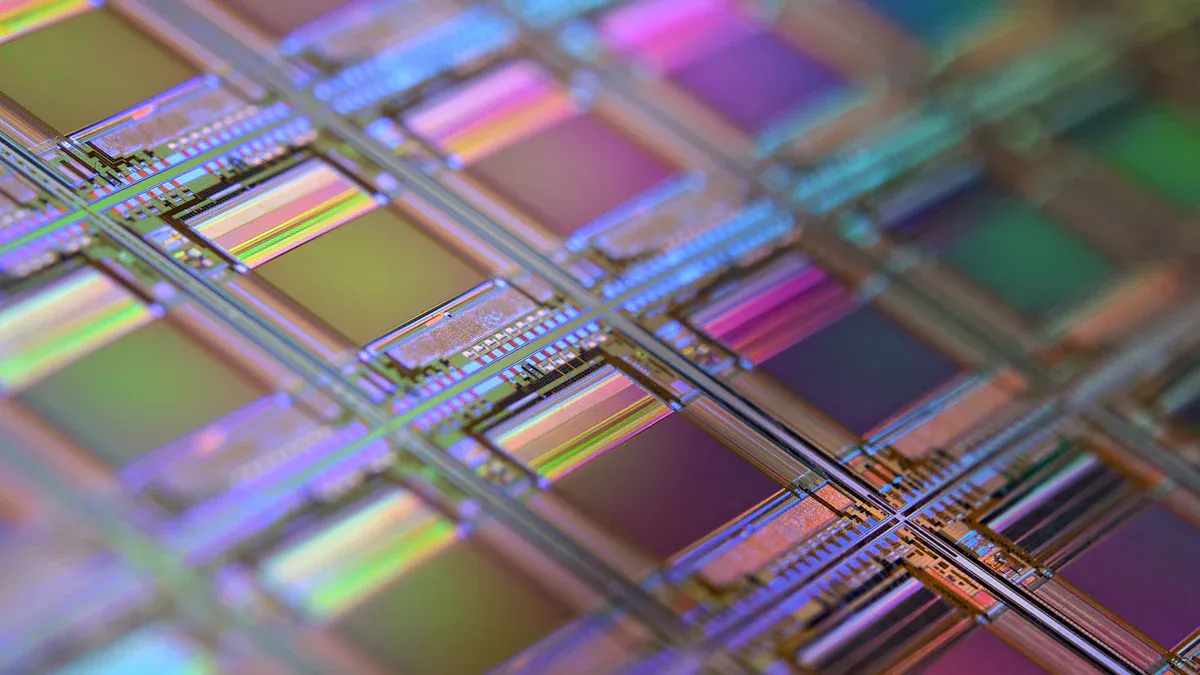
Thermal Performance
Thermal performance is a critical factor in semiconductor manufacturing. Graphite susceptors excel in this area due to their exceptional thermal conductivity. They distribute heat uniformly, which is essential for processes like epitaxial growth and chemical vapor deposition. This uniformity minimizes temperature gradients, reducing the risk of defects in the wafer.
EPI susceptors, often made from silicon carbide or coated graphite, also deliver excellent thermal stability. Their design ensures consistent heat distribution, particularly during epitaxial growth. However, their performance may vary depending on the specific coating material and process conditions. Manufacturers must evaluate the thermal requirements of their processes to determine the most suitable option.
Cost Efficiency
Cost efficiency often influences the choice between these two wafer carriers. Graphite susceptors are generally more affordable due to their material availability and manufacturing processes. Their cost-effectiveness makes them a popular choice for applications requiring high thermal performance without excessive expenses.
EPI susceptors, while more expensive initially, offer long-term value. Their durability and ability to enhance material quality can lead to higher yields and reduced production costs over time. For high-precision applications, the investment in EPI susceptors often proves worthwhile.
Durability and Maintenance
Graphite susceptors are highly durable, withstanding prolonged exposure to high temperatures and reactive gases. However, they require proper handling to prevent contamination and maintain performance. Advances in coating technologies have further improved their longevity.
EPI susceptors, with their advanced coatings, resist chemical degradation and wear. Their maintenance involves careful cleaning to preserve the integrity of the coating. While they demand more attention, their durability under extreme conditions makes them a reliable choice for demanding processes.
Process Compatibility
Graphite susceptors are versatile and compatible with various semiconductor processes, including chemical vapor deposition and annealing. Their adaptability makes them suitable for a wide range of applications.
EPI susceptors are specifically designed for epitaxial growth processes. Their optimized surface properties and thermal stability make them indispensable for producing high-quality crystalline layers. Manufacturers must align their choice with the specific requirements of their semiconductor processes to achieve optimal results.
Recommendations for Choosing the Right Wafer Carrier
When to Choose Graphite Susceptors
Graphite susceptors are ideal for processes requiring high thermal stability and uniform heat distribution. Their ability to withstand demanding conditions makes them suitable for applications where precision and durability are critical. Manufacturers often select graphite susceptors for atomic layer deposition (ALD) and chemical vapor deposition (CVD) due to their reliable performance.
- Uniform Heat Distribution: Graphite susceptors ensure consistent temperature across the wafer, which is essential for maintaining film quality and thickness during ALD.
- Thermal Stability: Their exceptional thermal properties support high-temperature processes without compromising wafer integrity.
- Durability: Engineered to endure extreme environments, graphite susceptors offer long-term reliability in high-precision manufacturing.
These characteristics make graphite susceptors a cost-effective choice for manufacturers seeking dependable performance in various semiconductor processes.
When to Choose EPI Susceptors
EPI susceptors are specifically designed for epitaxial growth processes, where achieving high-quality crystalline layers is paramount. Their advanced coatings and material composition enhance thermal uniformity and chemical resistance, making them indispensable for applications requiring precision and consistency.
Manufacturers should consider EPI susceptors for:
- Silicon Carbide (SiC) Epitaxy: EPI susceptors optimize the growth of SiC layers, which are essential for power electronics and electric vehicles.
- Gallium Nitride (GaN) Epitaxy: Their ability to minimize defects supports the production of GaN layers used in LED and RF devices.
- Advanced Semiconductor Devices: EPI susceptors contribute to the fabrication of next-generation devices, including those used in 5G technology and artificial intelligence.
For processes demanding superior material quality and defect reduction, EPI susceptors provide unmatched performance and long-term value.
Practical Tips for Decision-Making
Selecting the right wafer carrier requires a structured approach that balances process requirements, cost considerations, and long-term benefits. Industry research offers practical frameworks to aid decision-making:
| Framework | Description |
|---|---|
| AHP | Combines qualitative and quantitative factors for ranking alternatives based on multiple criteria. |
| PROMETHEE | Integrates AHP and fuzzy logic to rank alternatives while considering decision maker preferences. |
| MOORA | Provides a multi-objective optimization approach for evaluating alternatives based on ratio analysis. |
Manufacturers can use these frameworks to evaluate wafer carrier options systematically. For example, AHP allows them to weigh factors like thermal performance and cost efficiency, while PROMETHEE incorporates preferences for specific process requirements.
Tip: Collaborating with industry experts or suppliers like Ningbo VET Energy Technology Co., Ltd ensures tailored solutions that align with unique manufacturing needs.
By leveraging these frameworks and expert insights, manufacturers can make informed decisions that optimize process efficiency and product quality.
Choosing between graphite and EPI susceptors depends on factors like thermal performance, cost, and process compatibility. Graphite excels in versatility and affordability, while EPI offers precision for epitaxial growth. Aligning the choice with specific process needs ensures optimal results.
Tip: Consult experts at Ningbo VET Energy Technology Co., Ltd for tailored wafer carrier solutions.
FAQ
What is the primary difference between graphite and EPI susceptors?
Graphite susceptors offer versatility and cost-efficiency, while EPI susceptors specialize in epitaxial growth with superior thermal uniformity and chemical resistance.
How does thermal performance impact wafer carrier selection?
Thermal performance ensures uniform heat distribution, reducing defects during semiconductor processes. Manufacturers must match carrier thermal properties with specific process requirements for optimal results.
Why consult Ningbo VET Energy Technology Co., Ltd for wafer carriers?
Ningbo VET Energy Technology Co., Ltd provides tailored solutions, leveraging expertise to meet unique manufacturing needs and ensure high-quality wafer carrier performance.


